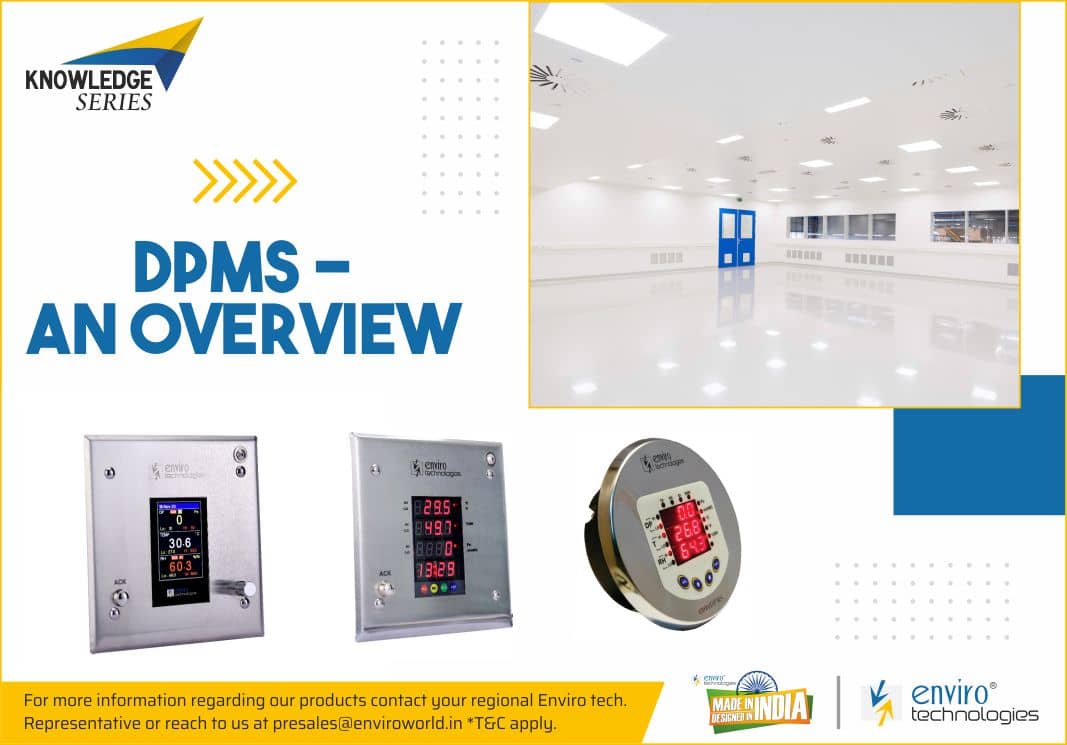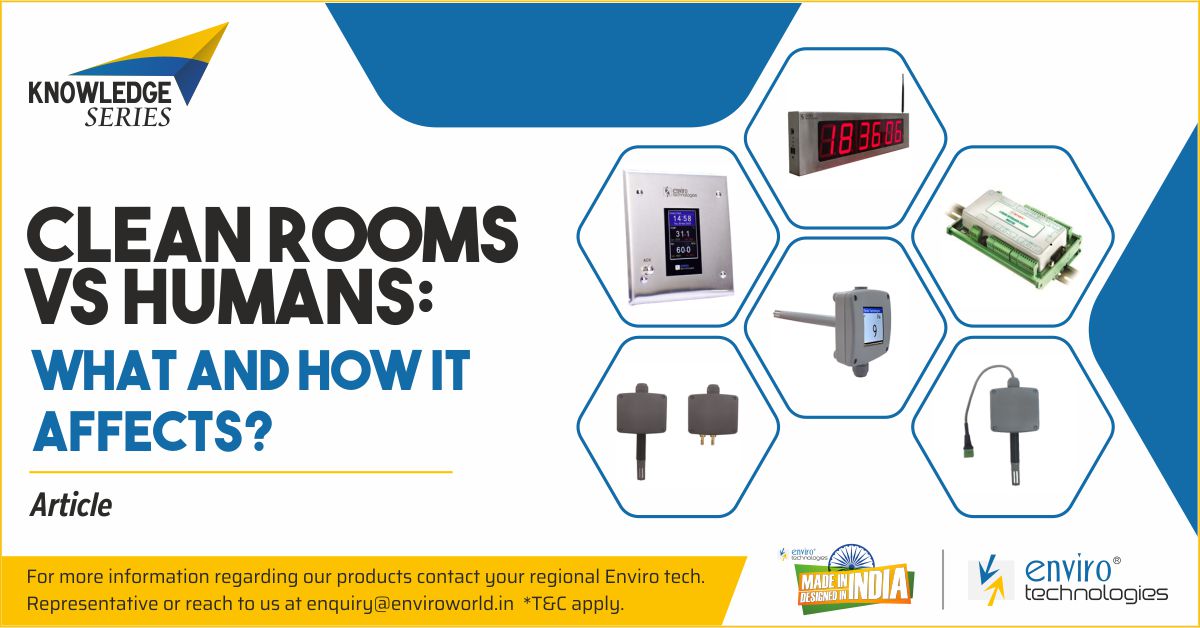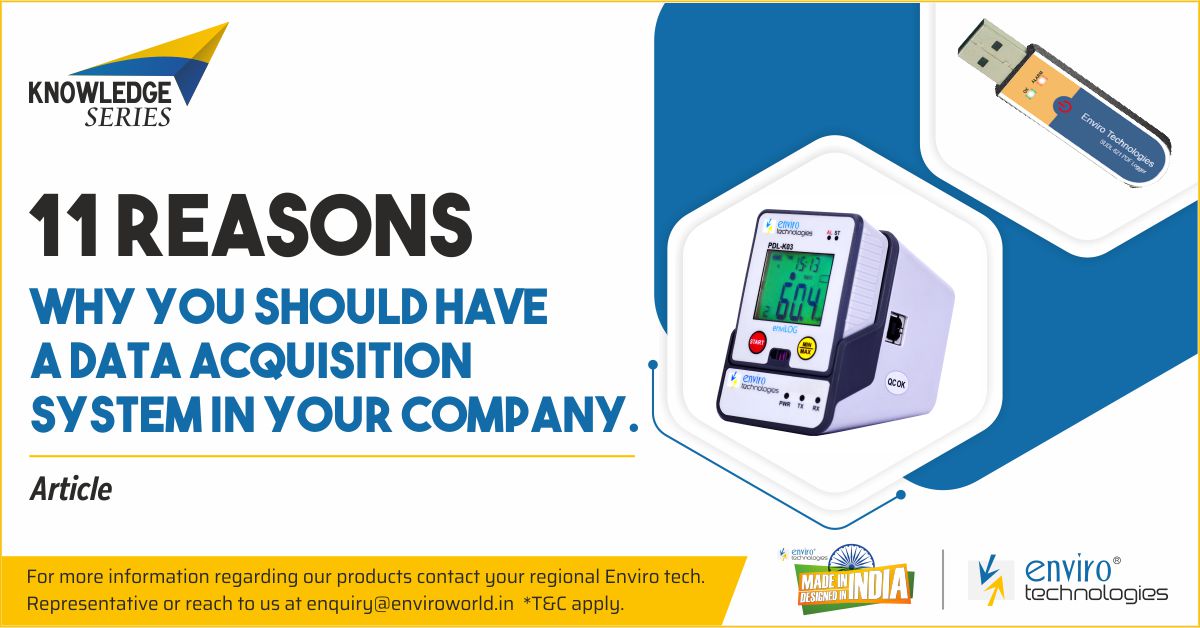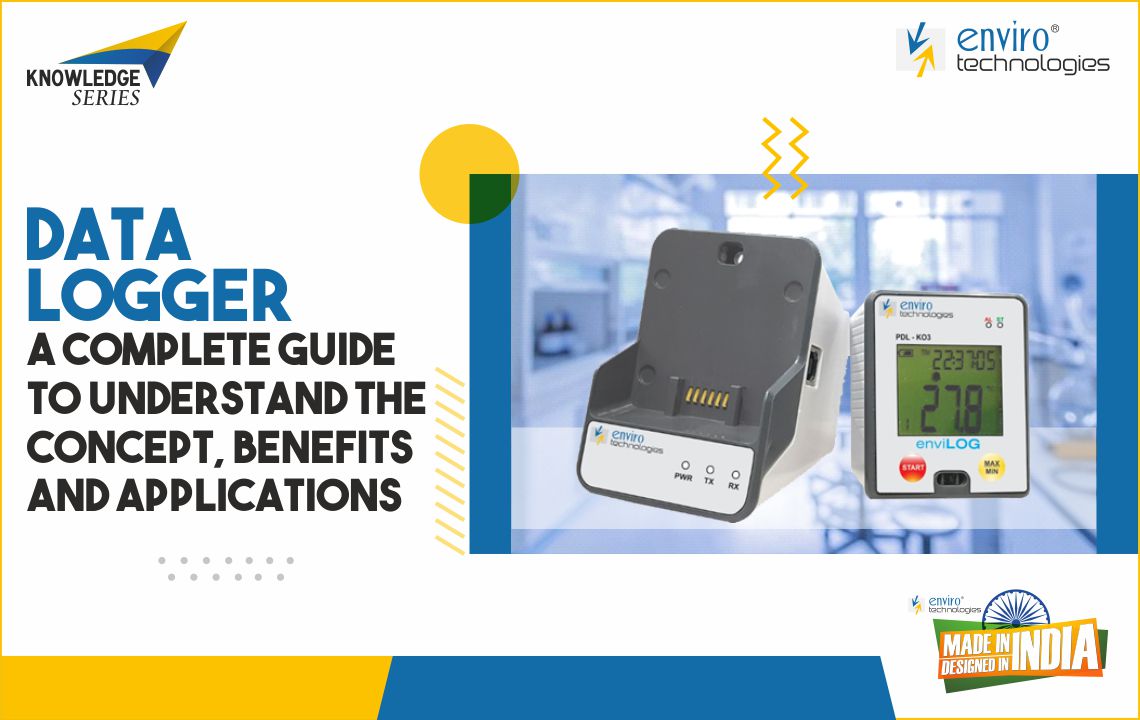- Introduction
- What is a cold chain?
- Effects of a broken cold chain
- Maintaining the cold chain
- Importance of temperature monitoring system
- Equipment for monitoring temperature
- Advantages of remote temperature monitoring
Introduction
The phrases such as ‘the world is a family’, ’at one’s fingertips’, ‘at your doorstep’, ‘at your convenience’ has been made into reality through digitalisation and globalisation. Geographical proximity is no longer a concern. Everything is available for everyone, from information to products. Technological innovations have made the world a smaller place - with borders fading into oblivion. Cold chain is one such innovation that has made human lives and accessibility to products and services across borders easy.
One can best understand the importance of the cold chain system in a world plagued by the COVID-19 pandemic, which has affected millions and claimed thousands of lives and counting. The recently developed vaccines need to be manufactured, stored, shipped, managed and administered at a controlled temperature which calls for advanced cold chain systems. However, it’s just not limited to pharmaceutical requirements. Various food businesses use cold chains to deliver fresh products to their consumers.
What is a cold chain?
A cold chain is a temperature-controlled supply chain system that includes a series of coordinated events in temperature-controlled environments to store, manage and transport temperature-sensitive products. Transportation through these chains includes refrigerated trucks and rail cars, refrigerated cargo ships, reefers, and air cargo. This system protects temperature-sensitive products from losing their potency, preserving them and ensuring longer shelf life
The cold chain system comprises four elements:
- Cooling systems to provide appropriate temperature for processing, storage, and transportation of products.
- cold storage to preserve goods for a definite period.
- cold transport involving various conveyances to move goods via road, rail or air while maintaining the temperature and protecting them from external factors.
- cold processing and distribution facilities for the transformation and processing of goods while ensuring sanitary conditions.
Effects of a broken cold chain
The cold chain comprises multiple elements, each accompanied by equipment and logistical requirements, ergo challenges that need to be mitigated to avoid damages. Failure of technology or equipment, want of a cost-effective system, lack of sufficient power to keep the system running, packaging failure, damaged or delayed shipment, vehicle breakdown, untrained staff, among others interrupt the working of cold chain thus resulting in damaged goods and increased wastage, especially economic losses.
Environmental factors impact the most if the cold chain breaks or is not maintained or monitored properly. Condensation is a major problem in cold chain equipment such as coolers and freezers, especially where the temperature fluctuates between warm and cold. This fluctuation produces moisture leading to product adulteration that can cause health hazards for consumers
Broken cold chain equipment also leads to the growth of mould and mildew. However, equipment is not the only source of issues. Sometimes, manhandling of temperature-sensitive products such as prolonged exposure to warm temperatures during loading and unloading also lead to stale and harmful goods.
Hence, it’s imperative to maintain the cold chain for failure to do so will lead to damaged goods, distribution of degraded items, health hazards for consumers upon its usage, wastage of resources and ultimately monetary losses.
Maintaining the cold chain
The cold chain comprises a series of transportation and storage links for the distribution of temperature-sensitive goods in a potent state from the manufacturers to the actual site. Hence, it requires an adequate amount of refrigeration at each step for the safe delivery of products.
However, numerous studies have shown that the cold chain often becomes susceptible to break-ins once it moves closer to warmer places, especially the developing countries. For example, a study from India showed that only 26% of clinics had written instructions for handling temperature-sensitive products such as vaccines, and only 60% kept up-to-date temperature logs.
Hence, it is important to constantly monitor and maintain the cold chain and its equipment at each step to avoid compromising the product, better resource management, especially for limited and expensive temperature-sensitive products, and avoid lost opportunities.
The cold chain equipment comprises refrigerators, thermometer and chart for recording daily temperature reading, cold boxes and ice packs, wherein each requires to be maintained and monitored for safe delivery of temperature-sensitive products without compromising their quality.
Refrigerators:
Usually, a refrigerator or a freezer is filled at least 50% of the total capacity at all times to allow for adequate cold air circulation and temperature stabilisation. It is placed in a cool room with ample spacing to protect it from heat and sunlight.
Reporting breakdowns, checking for refrigerator seals to stop leaking of cold air, keeping back-up ready for brittle or torn parts, preventing ice build-up during defrosting refrigerators for cleaning, and ensuring the cleanliness of surrounding areas are part of maintaining this component. In addition, frequent inspections are mandatory for maintenance, along with monitoring the temperature regularly.
Thermometer:
The cold chain uses various types of thermometers to maintain and monitor refrigerator temperatures. Choosing a thermometer is a vital part of maintenance.
Digital thermometers or mercury minimum-maximum thermometers are most reliable for their easy readability. Most cold chains add a thermometer to all the components to measure the internal temperature and maintain it.
Cold boxes and ice packs:
A cold box is an insulated container with a tight-fitting insulated lid and ice packs to maintain the temperature. These are used to transport temperature-sensitive products to their destination.
An ideal cold box has ample space for goods and ice packs. The external surface material is durable and robust with an air-tight lid, strong handles, freezer blocks and ice packs for a seamless transition.
A major component that goes into the maintenance of the cold chain is the person in charge and other staff. A considerable amount of time and effort is invested to train them properly for handling various tasks, including break-ins for smooth functioning of the cold chain system.
Importance of temperature monitoring system
The sustenance of living creatures is interlinked with environmental factors, most importantly the temperature. Living things evolved while adapting to the temperature difference, a few perishing in the process. Consumable temperature-sensitive products are no exception to that. Hence, temperature monitoring is vital, especially in food and beverages, healthcare, laboratories and pharmaceuticals industries.
The temperature difference in regions closer to the equator, such as India, makes the protection of temperature-sensitive products in cold-chain a challenging task. Compliance and legal rules coupled with environmental factors make it tough to maintain the potency of products such as fruits and vegetables, milk, medicine, vaccines, et al.
Hence, temperature monitoring is imperative to ensure that the required temperature is maintained throughout the chain from manufacturing to transit while preserving the quality of these products, increasing their shelf life, and avoiding losses worth millions. Besides, it offers other advantages too.
Temperature monitoring systems are easy to use, customisable, record and display an array of information on temperature, pressure, humidity, and other important measures which help maintain the temperature. In addition, they flag errors or any instrument malfunctions when encountered. This system is useful to prevent loss due to mechanical failure and improves medication safety and patient care.
In addition, the temperature monitoring systems offer options for instant notifications and alerts, which allow one to recognise temperature differences and take immediate action. This feature reduces dependency on manual reports and thereby reduces the chances of human error. Some systems allow data to be gathered and stored in a cloud, which makes it accessible from anywhere through mobile devices.
Equipment for monitoring temperature
Temperature measurement devices, which form the crux of the cold chain system, can be bifurcated into two major categories:
- simple single-channel devices with a USB interface
- multi-channel intelligent data logging systems.
The device, connected to temperature sensors, aids in the digitalisation of temperature value, maintains records, notifies inconsistency and indiscrepancies through alarms and transmits data to the main server for safe record keeping.
The most commonly used automated measurement devices are data loggers, a cost-effective, durable, reliable and lasting electronic device that collect and store temperature or other measurement values. The device comes with an in-built alarm system that notifies the anomalies encountered during the process.
Data loggers are customisable based on the industry needs, especially cold chain temperature data loggers where monitoring refrigerators/freezers and temperature-sensitive products are of prime importance. Data loggers capture data via temperature sensors and are usually dedicated to a certain type.
However, they can be specifically programmed based on sensor types. Based on the variety of needs, one can choose from the following three types of sensors:
Thermocouples:
A popular and cost-effective option, they are simple to use and operate in a wide temperature range. These are best suited for spaces where high accuracy is not required.
RTD sensor:
These are used in refrigerators and freezers for high-precision measurements. These sensors are stable, offer accurate readings and have a narrower operating range.
Thermistors:
These sensor’s resistance changes with temperature. However, it is non-linear. They offer more accurate readings in a limited temperature range.
Users have the option to choose between wired including USB or ethernet interface and wireless data loggers including Wi-Fi and proprietary RF links, Bluetooth, cellular modem, and more
The three common types of data loggers are:
Standalone data loggers:
Used in handheld models which either use USB for data retrieval or rely on WiFi to transmit data.
Networked data loggers:
Advisable for those who want to transmit the data to PC. It uses remote units to collect data locally and transmit it to a base station, which transmits alarms and data via e-mail to specific addresses, or by FTP to a server
Wireless data loggers:
Used to immediately transfer their alarm status to an office PC and avoid damages.
Advantages of remote temperature monitoring
Temperature-sensitive products cross several checkpoints while reaching their destination. If not monitored properly, the quality of goods worth billions is lost, making them useless and detrimental. To avoid this situation, various businesses and organisations use remote temperature monitoring that reduces the risk of incorrect or mismatched data due to manual records.
This method allows them to maintain the history of records and offers more accurate information. The automated reports also serve as proof to regulators stating that the product or environment was kept at a specified temperature for the entire storage or trip duration.
These devices are also cost-effective as they are affordable and eliminate additional labour costs. Remote monitoring systems are also reliable as they come with an alarm system that can send notifications via email, smartphone, tablets, SMSes or even voice message phone calls.
enviLOG – Temperature & Humidity Data Logger is a great example that offers remote temperature monitoring, especially during transit. It is a user-friendly, portable system for reefer truck temperature monitoring which gives one year of battery life. It offers long-term stability, provision to transfer data to the PC via USB base station at destination or source point with visual alerts and blue-tooth compatibility to download data via mobile app.

Remote monitoring temperature gives detailed analysis through PDF reports which ensure that corrective measures were taken to maintain the product quality. These reports also include critical statistics, alarm events and other related information to ensure transparency in the system.
enviro SUDL - Single-Use Temperature Datalogger is one such example. Its PDF-based temperature data logger is specifically designed for the convenience of the cold chain industry and is widely used in transit export consignments of critical medicine.

Technological innovations in automated temperature monitoring systems have made maintenance easy. Today, one gets a host of affordable options, has an easy interface and can be customised according to one’s needs.
While choosing a system, assess your business requirements, temperature sensors employed, the bandwidth of wifi connection and requirement of alarm/notification system to find the correct system for you.
We will be more than happy to help you with finding the right solution!
Check out our services here: https://www.enviro-technologies.com/services.php





















